Total deal could lead to project boom in Iraq
10 April 2023

The finalisation of the latest $27bn project deal announced by TotalEnergies, QatarEnergy and Iraq has surprised many stakeholders in the country’s energy sector.
The announcement came after a long period of, at times dramatic, negotiations.
Since 2021, progress on the projects has stalled due to disputes over the terms of the agreement.
In January and February this year, as negotiations were entering their final stages, it was reported that Total had started to pull senior staff out of Iraq.
At the time, the Iraqi member of parliament Mustafa Jabbar Sanad said it was unclear whether the move was simply a negotiating tactic.
When negotiations blew past a 15 February deadline earlier this year and then another deadline a month later, many stakeholders in the country’s energy sector expected many more months to pass before common ground would be found, if it could be found at all.
“I was very pessimistic about a deal being finalised,” said one industry source. “This was all meant to be tied up and finished in 2021, so after many years of failing to finalise the details, why would things change now?
“The fact that things appear to have been tied up so neatly in the end is very surprising.”
Positive signal
A key sticking point in the final phase of the negotiations was the stake that the Iraqi government would hold in the venture.
Iraq pressed hard for a 40 per cent stake, but this was reduced to just 30 per cent in the final deal.
After signing the deal, Total said it was: “A strong and positive signal for foreign investment in the country.”
The $27bn price tag attached to the deal is significant for Iraq. It is likely to increase optimism about the country’s project market, especially when seen in relation to other major economic announcements over recent months.
The fact that things appear to have been tied up so neatly in the end is very surprising
Industry source
So far this year, Iraq has tendered six major refinery contracts as part of a major downstream push.
If the drive to develop these refineries goes to plan, it could significantly boost the Iraqi economy by dramatically raising the volume and quality of the refined products that it can produce and export.
Another positive signal to investors and stakeholders was the finalisation of a three-year draft budget law that has been sent to parliament for approval.
For this year, the budget stands at ID197.82tn ($152.17bn) and it will be repeated for three years with the possibility of changing the numbers after the approval of the cabinet and parliament.
Strategically important projects
Taken together, the approval of Iraq’s first multi-year budget, along with a major downstream push, and the finalisation of the $27bn deal with TotalEnergies and QatarEnergy sets the scene for a potential explosion in infrastructure activity.
The four projects covered by the deal with TotalEnergies and QatarEnergy are not only large in scale, but are of significant strategic importance.
The four projects are:
- The gas growth integrated project (GGIP)
- The $4bn common seawater supply project (CSSP)
- A project to develop the Artawi field
- The establishment of a 1GW solar energy project for the Electricity Ministry
The GGIP has previously been described as the most important project of the four.
The facility is expected to process 300 million cubic feet a day (cf/d) of gas and double that after a second development phase.
Large volumes of gas are currently flared from these fields, causing significant environmental damage.
Collecting and processing this gas will generate increased hydrocarbons revenues and reduce environmental damage. The planned central gas complex will be located in Artawi.
The gas processing project will supply Iraq’s national gas network to generate electric power, as well as to increase the production of gas products, including liquefied petroleum gas and condensate.
The CSSP is also strategically important as it will address water shortages in Basra that are fuelling political instability and provide water for injection into oil fields to boost production at ageing fields.
The solar project will address electricity shortages, while developing the Artawi field will help Iraq boost upstream production capacity and capitalise on higher global oil prices.
After so many previous announcements falling through and promises being broken, the Iraqi government has lost a lot of trust
Senior figure at an international engineering company
Timing is everything
While the outlook for projects and investment in Iraq looks far better than it has for a long time, many stakeholders remain concerned that the promised developments will not occur as expected and are refraining from making significant investments to try to capitalise on the situation.
“After so many previous announcements falling through and promises being broken, the Iraqi government has lost a lot of trust,” said one senior figure at an international engineering company.
While recent announcements make it seem like an era of opportunity could be nearing for engineering companies looking to win big contracts, Iraq might struggle to find contractors willing to take on the projects at a favourable price.
“Timing is everything,” said one contractor. “Right now, there are also a lot of profitable engineering opportunities for engineering companies elsewhere in the region as well.”
Nations such as Saudi Arabia and the UAE are in the midst of large spending sprees as they drive to expand energy infrastructure projects.
Both nations are seen as far less risky locations for investment project work. It may be difficult to attract the best companies to work in Iraq over the coming years if the country is not willing to make favourable offers to make it worth their while.
Exclusive from Meed
-
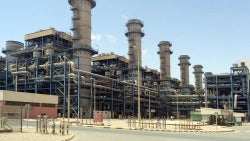 Firms seek to prequalify for Oman waste-to-energy project
Firms seek to prequalify for Oman waste-to-energy project10 November 2025
-
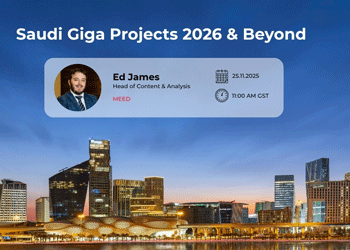 WEBINAR: Saudi gigaprojects 2026 and beyond
WEBINAR: Saudi gigaprojects 2026 and beyond7 November 2025
-
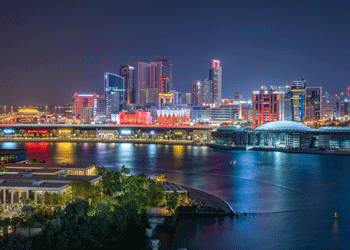 Bahrain advances utility reform
Bahrain advances utility reform7 November 2025
-
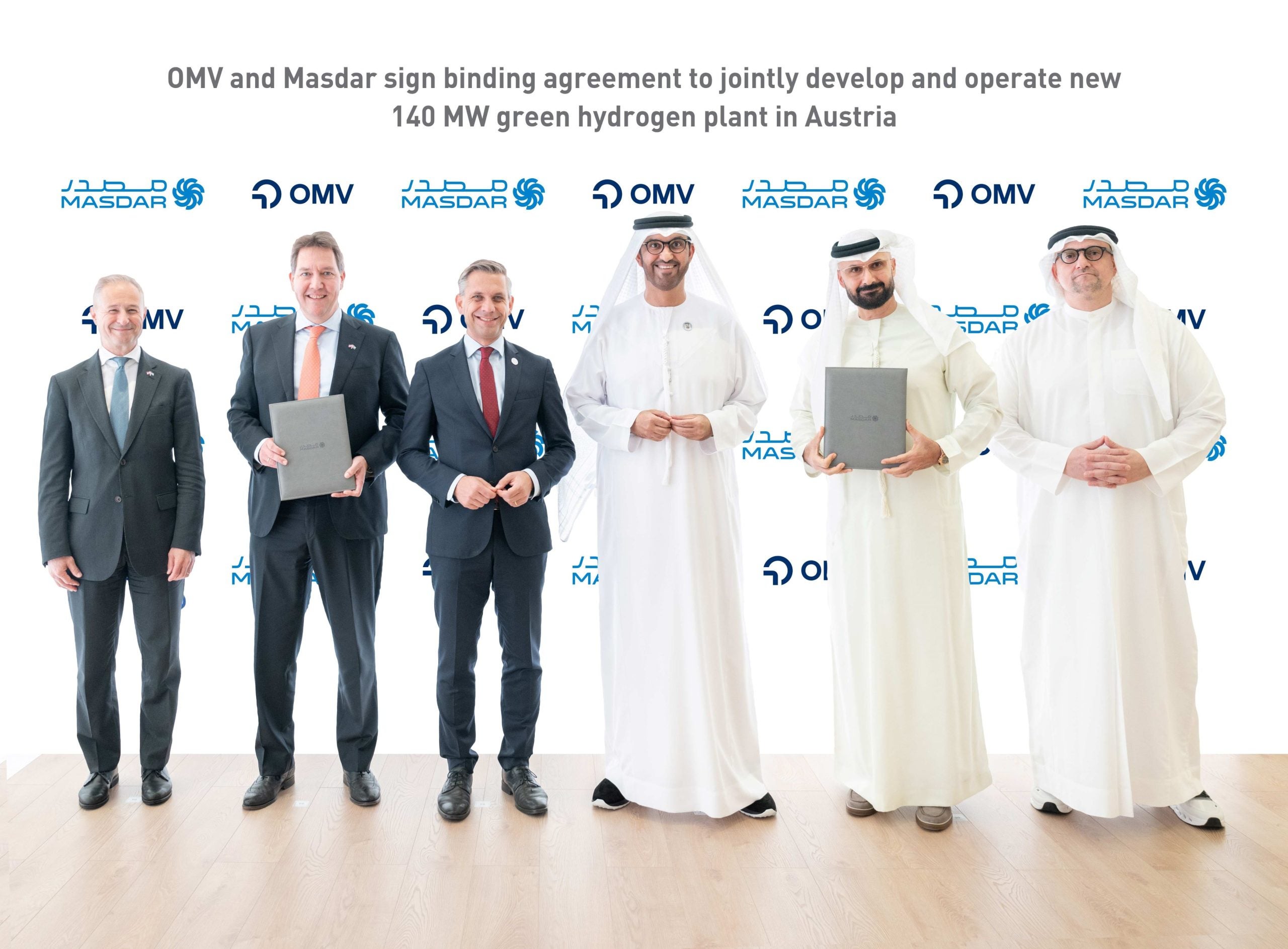 Masdar and OMV sign 140MW green hydrogen plant deal
Masdar and OMV sign 140MW green hydrogen plant deal7 November 2025
-
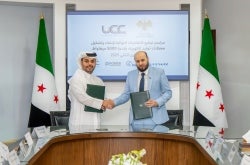 Syria signs deal for 5GW power projects
Syria signs deal for 5GW power projects7 November 2025
All of this is only 1% of what MEED.com has to offer
Subscribe now and unlock all the 153,671 articles on MEED.com
- All the latest news, data, and market intelligence across MENA at your fingerprints
- First-hand updates and inside information on projects, clients and competitors that matter to you
- 20 years' archive of information, data, and news for you to access at your convenience
- Strategize to succeed and minimise risks with timely analysis of current and future market trends
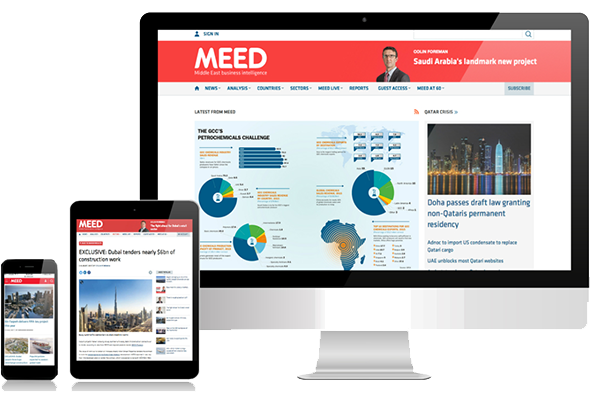
Related Articles
-
 Firms seek to prequalify for Oman waste-to-energy project
Firms seek to prequalify for Oman waste-to-energy project10 November 2025
Oman’s state offtaker Nama Power & Water Procurement (Nama PWP) has received 18 statements of qualification from international and local companies for the planned waste-to-energy (WTE) project in Barka, South Al-Batinah Governorate.
The project will be Oman’s first large-scale WTE facility, with a generation capacity of 95MW-100MW.
According to Nama PWP, the facility will be developed on a 190,000-square-metre site and is scheduled to reach commercial operation in the fourth quarter of 2030.
The project is expected to contribute 757 gigawatt-hours of renewable energy annually and reduce carbon dioxide emissions by about 302,000 tonnes a year.
It will process up to 3,000 tonnes of municipal solid waste a day using grate incineration technology.
The following companies submitted statements of qualifications:
- Acwa Power (Saudi Arabia)
- Al-Ramooz National (Oman)
- Al-Tasnim Enterprise (Oman)
- Aspec for Contracting & Environmental Consultancy (Oman)
- China Communications Construction (China)
- China Everbright Environment Group (China)
- China Tianying (China)
- Eco Vision (Oman)
- Emirates Waste to Energy (UAE)
- Eternal Industrial Investment (China)
- FCC Medioambiente Internacional (Spain)
- Future Vision Engineering Services (Oman)
- Horsol Switz Engineering Asia (Singapore)
- Hunan Junxin (China)
- Itochu Corporation (Japan)
- Kanadevia Inova (Switzerland)
- Keppel Seghers Engineering Co (Singapore)
- Mohammed Abdulmohsin Al-Kharafi & Sons (Kuwait)
- NV Besix (Belgium/UAE)
- Oman National Engineering & Investment (Oman)
- Paprec Group (France)
- Satarem America (US)
- Seven Seas Petroleum (Oman)
- Shanghai Environment Group (China)
- Shanghai SUS Environment (China)
- Shenzhen Energy Group (China)
- Sinoma Energy Conservation (China)
- Suez International SAS (France/Oman branch)
- Veolia Middle East (France)
- Urbaser (Spain)
In August, MEED reported that Oman had finally moved to the prequalification phase following attempts to start work on the project to develop a WTE facility for several years.
In 2019, when it was known as Oman Power & Water Procurement Company, Nama PWP is understood to have started the process to appoint consultants for the project, based on an independent power producer model.
It later put the project on hold, only to revive the prequalification and procurement process, along with Oman Environmental Services Holding Company (Beah), in 2023.
Beah will supply the waste feedstock for the project, which is part of a long-term plan to convert municipal waste into energy and reduce landfill dependency, supporting Oman’s net-zero emissions target for 2050.
 READ THE NOVEMBER 2025 MEED BUSINESS REVIEW – click here to view PDF
READ THE NOVEMBER 2025 MEED BUSINESS REVIEW – click here to view PDFMena players up the ante in global LNG production race; Investment takes UAE non-oil economy from strength to strength; Project finance activity draws international lenders back to market
Distributed to senior decision-makers in the region and around the world, the November 2025 edition of MEED Business Review includes:
> AGENDA 1: Gulf LNG sector enters a new prolific phase> INDUSTRY REPORT 1: Region sees evolving project finance demand> INDUSTRY REPORT 2: Iraq leads non-GCC project finance activity> GREEN STEEL: Abu Dhabi takes the lead in green steel transition> DIGITISATION: Riyadh-based organisation drives digital growth> UAE MARKET FOCUS: Investment shapes UAE growth storyTo see previous issues of MEED Business Review, please click herehttps://image.digitalinsightresearch.in/uploads/NewsArticle/15058075/main.jpg -
 WEBINAR: Saudi gigaprojects 2026 and beyond
WEBINAR: Saudi gigaprojects 2026 and beyond7 November 2025
Webinar: Saudi Gigaprojects 2026 & Beyond
Tuesday 25 November 2025 | 11:00 GST | Register now
Agenda:
- Latest update to November 2025 on the gigaprojects programme and the Saudi projects market in general, with full data analysis for 2025 year-to-date
- Latest assessment on the reprioritisation of the programme and views on which of the gigaprojects are being prioritised
- Summary of key recent project developments and announcements
- Analysis of key contracts awarded this year to date
- Highlights of key contracts to be tendered and awarded over the next six months
- Key drivers and challenges going forward plus MEED’s outlook for the future short and long-term prospects of the gigaprojects programme
- In-depth look at the recently announced King Salman Gate gigaproject and other planned, but unannounced PIF developments
- Life beyond the gigaprojects – what other key project programmes are being implemented in the kingdom
- Q&A session
Hosted by: Edward James, head of content and analysis at MEED
 A well-known and respected thought leader in Mena affairs, Edward James has been with MEED for more than 19 years, working as a researcher, consultant and content director. Today he heads up all content and research produced by the MEED group. His specific areas of expertise are construction, hydrocarbons, power and water, and the petrochemicals market. He is considered one of the world’s foremost experts on the Mena projects market. He is a regular guest commentator on Middle East issues for news channels such as the BBC, CNN and ABC News and is a regular speaker at events in the region. https://image.digitalinsightresearch.in/uploads/NewsArticle/15045990/main.gif
A well-known and respected thought leader in Mena affairs, Edward James has been with MEED for more than 19 years, working as a researcher, consultant and content director. Today he heads up all content and research produced by the MEED group. His specific areas of expertise are construction, hydrocarbons, power and water, and the petrochemicals market. He is considered one of the world’s foremost experts on the Mena projects market. He is a regular guest commentator on Middle East issues for news channels such as the BBC, CNN and ABC News and is a regular speaker at events in the region. https://image.digitalinsightresearch.in/uploads/NewsArticle/15045990/main.gif -
 Bahrain advances utility reform
Bahrain advances utility reform7 November 2025

In September, Bahrain’s government referred a draft law to parliament to restructure the kingdom’s electricity and water sector.
This proposes dissolving the Electricity & Water Authority (Ewa) and transferring its assets and functions to a newly established National Electricity & Water Company, which will operate under the oversight of the Electricity & Water Regulatory Authority.
The reform marks the first full structural overhaul of Bahrain’s utilities sector in nearly two decades and signals a shift towards a more commercially driven model.
Regulatory and operational roles would be separated for the first time, allowing private sector participation under transparent licensing and tariff systems, aligning Bahrain with utility reforms seen in Saudi Arabia, Oman and the UAE.
It comes amid a relatively subdued year for new contracts that broadly falls in line with 2024’s performance. Most significantly, Bahrain continues to move towards its two upcoming utility public-private partnership (PPP) schemes, the Sitra independent water and power project (IWPP) and the Al-Hidd independent water project (IWP).
In August, a developer tender was issued for the main works package for the Sitra IWPP. This followed the prequalification of seven companies and consortiums, reflecting a wide range of international interest.
The planned Sitra IWPP replaces the previously planned Al-Dur 3 and will be the first IWPP project to be awarded since the 1,500MW Al-Dur 2 IWPP was completed in 2021.
The combined-cycle gas turbine (CCGT) plant is expected to have a production capacity of about 1,200MW of electricity, while the project’s seawater reverse osmosis (SWRO) desalination unit will have a production capacity of 30 million imperial gallons a day (MIGD) of potable water. The main contract is expected to be awarded by the end of the year, with commercial operations set for 2029.
A developer tender was also recently launched for Bahrain’s first independent, standalone SWRO plant following a prequalification process that shortlisted nine companies and consortiums.
The Al-Hidd IWP is expected to have a production capacity of about 60MIGD of potable water and be completed in 2028. It is likely to be the last IWPP for Bahrain, which aims to reach net-zero carbon emissions by 2060.
The imminent launch of the two projects boosts Bahrain’s projects pipeline, which has experienced muted growth in the aftermath of the Covid-19 pandemic, carried by relatively small-scale projects.
Solar PV projects
The creation of the National Electricity & Water Company as Bahrain’s new operational entity could also support the rollout of future renewable energy schemes.
As a corporatised offtaker, the company will be able to enter long-term power purchase agreements (PPAs) with private developers under a more bankable framework. Currently, these are negotiated by Ewa on a case-by-case basis.
The government recently signed a 123MWp solar PPA with the UAE’s Yellow Door Energy, highlighting growing private sector interest in the market. The project includes the world’s largest single-site rooftop solar installation and will be developed at Foulath Holding’s industrial complex in Salman Industrial City.
Bahrain has already set a target to source 20% of its energy from renewables by 2035 and reach net-zero emissions by 2060.
In October, Ewa also issued a tender for the development of the Bilaj Al-Jazayer solar independent power project (IPP). The planned 100MW project will be developed on a build-own-operate basis with a 25-year contract term.
In parallel, Bahrain is broadening its long-term energy strategy beyond solar. In July, the kingdom signed a cooperation agreement with the US on the peaceful use of nuclear energy, aimed at advancing research and potential deployment of small modular reactor (SMR) technology.
For countries like Bahrain, which has limited land availability and high energy demand growth, SMRs could offer a way to produce low-carbon, reliable baseload power without requiring vast areas of land for solar or wind farms.
Officials have indicated that SMRs, along with floating solar solutions, are being studied as part of a broader push to diversify energy sources and expand renewable generation capacity.
Water and waste
Bids for four Ewa-owned projects are currently being evaluated. This includes the construction of a new SWRO desalination plant on Hawar Island and rehabilitation works for the Ras Abu Jarjur water treatment plant in Askar. Contracts for both projects are expected to be awarded this year.
Bahrain’s Ministry of Works (MoW) is the other client for the island-state’s power and water infrastructure-related projects. It has awarded three smaller sewage-related contracts this year.
It is also preparing to tender the construction of a $130m sewage treatment plant in Khalifa City, which will be developed in two phases. Meanwhile, the construction of MoW’s sewerage scheme phase 2 network in Bahrain remains in the early design stage with no further updates.
As Bahrain moves ahead with these projects, the new electricity and water law could define how future investments are structured, regulated and financed. This could reshape the kingdom’s utilities landscape for decades to come.
MEED's December special report on Bahrain also includes:
> ECONOMY: Bahrain’s cautious economic evolution
> BANKING: Mergers loom over Bahrain’s banking system
> OIL & GAS: Bahrain remains in pursuit of hydrocarbon resources
> CONSTRUCTION: Bahrain construction faces major slowdown
> TRANSPORT: Bahrain signs game-changer aviation deal with Air Asiahttps://image.digitalinsightresearch.in/uploads/NewsArticle/15044915/main.gif -
 Masdar and OMV sign 140MW green hydrogen plant deal
Masdar and OMV sign 140MW green hydrogen plant deal7 November 2025
Register for MEED’s 14-day trial access
Abu Dhabi Future Energy Company (Masdar) has signed a binding agreement with Austrian energy company OMV to develop and operate a major green hydrogen production plant in Austria.
The 140MW green hydrogen electrolyser plant will be Europe's fifth-largest hydrogen plant, according to Masdar chairman, Sultan Ahmed Al-Jaber.
It will be built in Bruck an der Leitha, about 40 kilometres southeast of Vienna.
The facility will be developed under a newly established joint venture, in which Masdar owns 49% and OMV holds the majority 51% stake.
The agreement was signed at the Abu Dhabi International Petroleum Exhibition and Conference (Adipec), in the presence of Al-Jaber; Austria’s Federal Minister of Economy, Energy and Tourism, Wolfgang Hattmannsdorfer; OMV CEO Alfred Stern; and Masdar CEO Mohamed Jameel Al-Ramahi.
It is expected that the project will reach financial close in early 2026, subject to final documentation, shareholder consent and regulatory approvals.
Construction began in September, with operations scheduled to start in 2027.
OMV, which already operates a 10MW electrolyser in Schwechat, will procure renewable electricity for hydrogen production and retain ownership of the output.
Several large-scale hydrogen facilities across Europe are currently under construction.
In 2024, Germany's Siemens Energy signed a deal with German utility EWE to build a 280MW green hydrogen electrolysis plant. This is expected to begin operations in 2027.
Masdar and OMV previously signed a letter of intent to cooperate on green hydrogen, synthetic sustainable aviation fuels (e-SAF) and synthetic chemicals in both the UAE and central and northern Europe.
 READ THE NOVEMBER 2025 MEED BUSINESS REVIEW – click here to view PDF
READ THE NOVEMBER 2025 MEED BUSINESS REVIEW – click here to view PDFMena players up the ante in global LNG production race; Investment takes UAE non-oil economy from strength to strength; Project finance activity draws international lenders back to market
Distributed to senior decision-makers in the region and around the world, the November 2025 edition of MEED Business Review includes:
> AGENDA 1: Gulf LNG sector enters a new prolific phase> INDUSTRY REPORT 1: Region sees evolving project finance demand> INDUSTRY REPORT 2: Iraq leads non-GCC project finance activity> GREEN STEEL: Abu Dhabi takes the lead in green steel transition> DIGITISATION: Riyadh-based organisation drives digital growth> UAE MARKET FOCUS: Investment shapes UAE growth storyTo see previous issues of MEED Business Review, please click herehttps://image.digitalinsightresearch.in/uploads/NewsArticle/15040802/main0933.jpg -
 Syria signs deal for 5GW power projects
Syria signs deal for 5GW power projects7 November 2025
Register for MEED’s 14-day trial access
The Syrian Ministry of Energy has signed final concession agreements with an international consortium led by Qatar’s Urbacon (UCC) Holding to build and operate eight power plants with a total capacity of 5GW.
The consortium includes Urbacon Concessions Investment (a subsidiary of UCC Holding), Kalyon GIS Energy (Turkiye), Cengiz Energy (Turkiye) and Power International (US).
UCC Holding and Power International USA are both subsidiaries of Qatar’s Power International Holding. The US-based subsidiary was likely created to ease transactions and imports to Syria under the new General Licence 25 (GL 25) US sanctions exemptions for Syria.
The final contracts cover the construction and operation of the following four natural gas-fired combined-cycle plants:
- North Aleppo (1,200MW)
- Deir Ezzor (1,000MW)
- Zayzoun (1,000MW)
- Mehardeh (800MW)
It also includes four solar projects totalling 1,000MW across Widian Al-Rabee, Deir Ezzor, Aleppo and Homs.
The agreements were signed in Damascus by Energy Minister Mohammad Al-Bashir and UCC Holding president Ramez Al-Khayyat, in the presence of consortium representatives and senior Syrian energy officials.
The deal represents Syria’s first integrated public-private partnership model in the energy sector and marks the start of the implementation phase of Syria’s national energy rehabilitation programme.
The projects also form part of a wider Qatari investment package in Syria.
In May, the ministry signed a $7bn memorandum of understanding that set the framework for strategic energy cooperation.
Preparatory engineering and technical works, including site surveys and feasibility studies, have since been completed.
Completion is expected within three years for the gas plants and two years for the solar plants, with the projects doubling the country’s output.
https://image.digitalinsightresearch.in/uploads/NewsArticle/15040717/main.jpg

